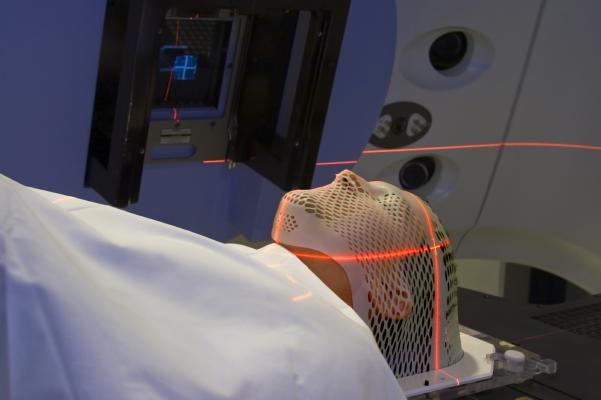February 10, 2014 — Adults with low-grade gliomas who received a chemotherapy regimen following completion of
radiation therapy lived longer than patients who received radiation therapy alone. This is according to long-term follow-up results from a National Institutes of Health-supported randomized controlled
clinical trial.
Since all three chemotherapy drugs in the regimen are commercially available, the treatment used in the clinical trial is available for use now. However, this form of chemotherapy is associated with some toxicities, such as reduced white blood cell counts leading to increased infection risk; Trial investigators recommend it should be utilized only by physicians experienced with managing the side-effects that may occur.
Low-grade gliomas grow more slowly and have a better outcome than the more common type of brain tumor in adults, which is classified as glioblastoma.
The Radiation Therapy Oncology Group (RTOG), a clinical trials organization funded by the National Cancer Institute (NCI), part of NIH, and NCI are making the results public. Full details from this analysis are to be presented at a scientific meeting in 2014 and in a peer-reviewed publication.
The study, RTOG 9802, enrolled 251 patients with low-grade gliomas between October 1998 and June 2002 to address the role of chemotherapy following radiation treatment. Patients enrolled were at high risk because they were 40 years or older, or had a less than complete surgical removal of their tumor if they were under 40 years of age.
All patients started treatment with surgery followed by radiation therapy. By random assignment, half of patients stopped treatment after radiation therapy and the other half received six cycles of chemotherapy after completing radiation therapy. Patients receiving chemotherapy got three drugs: procarbazine (P); CCNU (C), which generically is known as lomustine; and vincristine (V). This chemotherapy, termed PCV, was given over 21 days and repeated every eight weeks for a total of six cycles.
A significant improvement in overall survival was noted for study participants who received PCV chemotherapy plus radiation therapy. PCV recipients experienced 13.3 years median survival time, compared to 7.8 years median survival time for those receiving radiation therapy alone. Median follow-up after initial enrollment has been almost 12 years.
Analysis of how patients are doing based upon the molecular and genetic characteristics of their tumors is ongoing. These studies will be important since molecular characteristics of related brain tumors have been able to identify patients most likely to benefit from chemotherapy.
“The results of this study are practice-changing,” said co-lead investigator Jan Buckner, M.D., professor of oncology, Mayo Clinic, Rochester, Minn. “Additionally, ongoing analysis of patient tumor samples should allow us to further identify the patients who will, and who will not, benefit from chemotherapy, taking yet another step toward individualized therapy.”
RTOG 9802 was sponsored by NCI and was designed and conducted by RTOG in collaboration with three other NCI cooperative groups (SWOG, ECOG-ACRIN and the Alliance for Clinical Trials in Oncology). RTOG will work as a component of a new network group, NRG Oncology, effective March 2014.
“This trial would not have been done in the United States without a large national network of investigators brought together through the NCI-supported Cooperative Group program that was capable of enrolling patients with a relatively uncommon cancer like low-grade glioma,” said Jeff Abrams, M.D., clinical director of NCI’s Division of Cancer Treatment and Diagnosis. “These findings also are an example of how combining available treatments can produce a significant improvement in clinical outcome.”
It is estimated that over 23,000 people will be diagnosed with primary brain tumors in the United States in 2014 and that 10 percent to 15 percent will have low-grade gliomas.
The National Cancer Institute (NCI) leads the National Cancer Program and the NIH effort to dramatically reduce the prevalence of cancer and improve the lives of cancer patients and their families, through research into prevention and cancer biology, the development of new interventions and the training and mentoring of new researchers.


